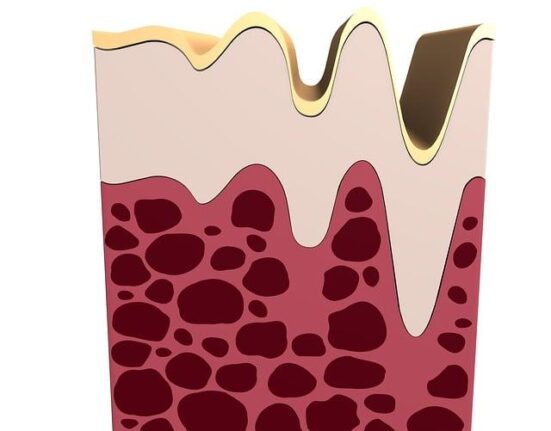In a world increasingly focused on health and wellness, vitamins have emerged as essential players in our daily quests for vitality. Among these, Vitamin E stands out, celebrated for its antioxidant properties and role in supporting skin health and immune function. As consumers navigate the aisles of supplements, a critical question arises: should you reach for natural or synthetic forms of vitamin E? This article delves into the nuances of both options, unraveling the science behind their effectiveness, bioavailability, and potential benefits. Join us as we explore the vibrant landscape of Vitamin E supplements, weighing their merits and guiding you toward an informed choice that aligns with your health goals.
Exploring the Varied Sources of Vitamin E: Nature’s Bounty versus Laboratory Creations
Vitamin E, a fat-soluble antioxidant, comes from both natural sources and synthetic formulations. Natural vitamin E, frequently enough derived from plant oils, nuts, and seeds, tends to contain a complex blend of tocopherols and tocotrienols, which can enhance its bioavailability and effectiveness in the body. Some of the richest sources include:
- Wheat germ oil
- Sunflower seeds
- Almonds
- Spinach
- Avocado
On the other hand, synthetic vitamin E is typically produced in a lab environment and usually found in the form of dl-alpha-tocopheryl acetate or dl-alpha-tocopherol. Though it may offer similar antioxidant functions, its impact on health may not equal that of its natural counterpart.To illustrate these differences, consider the table below, which highlights key attributes:
| Factor | Natural vitamin E | Synthetic Vitamin E |
|---|---|---|
| Source | Plant-based sources | Laboratory-produced |
| Bioavailability | Higher | Lower |
| Composition | Mixed tocopherols/tocotrienols | Mostly alpha-tocopherol |
| Cost | Generally higher | Usually lower |

Understanding Absorption and Bioavailability in natural and Synthetic Vitamin E
When delving into the world of vitamin E, it’s essential to distinguish between two primary forms: natural and synthetic. Natural vitamin E generally comes from plant oils and is frequently enough labeled as d-alpha-tocopherol. In contrast, synthetic versions, known as dl-alpha-tocopherol, are derived from petrochemicals and may have a diffrent absorption rate in the body. The body recognizes and tends to absorb the natural form more effectively, leading to higher bioavailability. Factors that affect this absorption include:
- Source: Natural sources such as nuts, seeds, and green leafy vegetables typically offer better assimilation.
- Formulation: Many formulations contain additional compounds that can enhance or inhibit absorption.
- Individual Health Factors: Conditions like malabsorption syndromes can substantially impact how well vitamin E is utilized.
Studies suggest that natural vitamin E can maintain higher serum levels compared to its synthetic counterpart, reinforcing the importance of considering the form you choose.To illustrate these differences, the following table summarizes their absorption characteristics:
| Form | Absorption Rate | Recommended Usage |
|---|---|---|
| Natural (d-alpha-tocopherol) | Higher | Daily dietary intake |
| Synthetic (dl-alpha-tocopherol) | lower | Supplemental use supported by a healthcare provider |

Evaluating Health Benefits: What Research Tells us About Different Forms
the world of Vitamin E supplements is intricately woven with debates about the efficacy of natural versus synthetic forms.Research indicates that the biological activity of vitamin E can vary significantly between these two types. Natural forms, typically derived from plant sources, like sunflower or safflower oil, are frequently enough recognized for their superior absorption and overall effectiveness in the human body. Studies suggest that natural tocopherols may provide enhanced antioxidant benefits and support cardiovascular health more robustly than their synthetic counterparts.
In contrast,synthetic forms of vitamin E,frequently enough found in fortified foods and supplements,contain a mixture of tocopherols that may not be as readily utilized by the body. this has raised questions about their long-term health benefits. For instance, some research highlights a potential link between high doses of synthetic vitamin E and adverse effects. To navigate these complexities,it’s essential to consider the specific relative proportions of tocopherols.The table below illustrates key differences between the natural and synthetic forms to aid in understanding their potential health implications.
| Type of Vitamin E | Source | Bioavailability | Potential Health Benefits |
|---|---|---|---|
| Natural Vitamin E | Plant oils | Higher | Antioxidant support,heart health,skin vitality |
| Synthetic Vitamin E | Lab-created | lower | Fortification,potential oxidative stress |

Making Informed Choices: Tips for Selecting the Right Vitamin E Supplement for You
When choosing a Vitamin E supplement, it’s critically important to consider various factors to ensure you are making the best choice for your health. Start by looking at the form of vitamin E—natural sources, typically labeled as d-alpha-tocopherol, are generally more bioavailable than their synthetic counterparts, identified as dl-alpha-tocopherol. This means that your body can utilize natural forms more effectively. Additionally, be sure to check for added ingredients. Supplements that include enriching phytochemicals, such as tocotrienols or mixed tocopherols, may provide broader health benefits related to antioxidant properties.
Label transparency is also a key element to consider. Opt for brands that provide detailed information about their sourcing and manufacturing processes. This can give you insights into the quality and purity of the product. Here are a few swift tips on what to look for when selecting your supplement:
- Check for third-party testing: This ensures the product has been tested for quality and potency.
- Review dosage instructions: Correct dosages matter,so follow recommended intake guidelines.
- Examine for allergens: If you have allergies or sensitivities, choose supplements free of common allergens.
Closing Remarks
the exploration of vitamin E supplements reveals a engaging interplay between nature and science. Whether you lean towards the natural forms derived from plant sources or the synthetic alternatives, it’s essential to recognize that both have their unique advantages and applications. As research continues to evolve, so too will our understanding of how these antioxidants contribute to our overall health and well-being. Ultimately, the choice between natural and synthetic vitamin E comes down to individual needs, preferences, and health goals. As always, consulting with a healthcare professional can help navigate this decision, ensuring that you harness the benefits of vitamin E safely and effectively. Remember, the path to wellness is not a one-size-fits-all journey, but with informed choices, you can enhance your health one supplement at a time.















Leave feedback about this